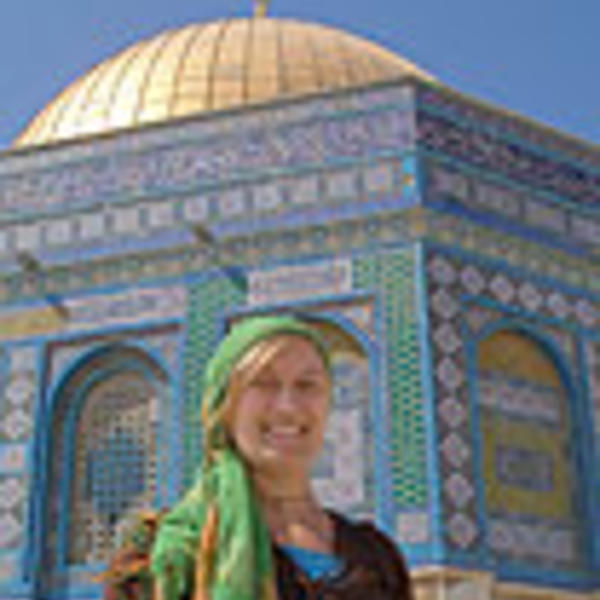Miriam Westin ’11 spent much of her summer digging — but it wasn’t beach sand that she was working with.
For two weeks in June and July, the studio art major was enriching her study of architecture by participating in an archaeological dig at an 8th century B.C. residential area in Tel Hazor in northern Israel while living in a kibbutz.
Westin, a native of St. John’s, Newfoundland, Canada, was one of two Holy Cross students who took part in a new study abroad scholarship program at the Rothberg Summer Institute at Hebrew University this summer. The program is sponsored by the Kraft-Hiatt Program for Jewish-Christian Understanding and the Center for Religion, Ethics and Culture. Here she shares some highlights.
OF BOOKS AND POTTERY The course involved working in the dig for nine hours a day, participating in pottery readings (in which she learned how to decipher vessel types and eras), attending evening lectures by professors and site supervisors, keeping field journals, and writing a research paper.
UNEARTHING THE PAST Despite not finding “a building of some importance,” she enjoyed the experience. “The archaeological dig was magical,” she says. “I had a lot of fun learning about field practices and having the opportunity to actually do some valuable work myself.”
A DIFFERENT KIND OF SUSTAINABILITY “It felt good to eat kosher food that mainly came from the kibbutz farms. We got a glimpse into the self-sustaining nature of the kibbutz.”
CULTURE SHOCK The experience also immersed Westin in day-to-day life in Israel. “On my first day, I was struck by the immense presence of the military in the country,” she says. “Israel has a mandatory military service by all its citizens, so practically every person I saw who was my age was in uniform. In fact, on the three-and-a-half hour bus ride up to the kibbutz, I was one of the only three civilians on the bus. All the other seats were filled by soldiers with semi-automatics in hand. That was a bit of a shock, but I have to say, I felt extremely safe! Another more uncomfortable aspect of the trip was the obvious tension between ethnic groups.”
SEEING IS BELIEVING During her classes at Holy Cross, Westin, has examined architecture from different cultures, and this experience has augmented her studies. “I think that spending so much time in the Holy Land has made an impact on me in terms of understanding some of the significance of a building in its place and time,” she says.
BACK TO THE ROOTS Visiting the geographic roots of Christianity had the greatest impact on Westin. “Not only visiting the sites of Jesus’ ministry in Galilee, and the city of His death and resurrection, but also having the opportunity to spend so much time in the capital of the global Jewish nation was more eye-opening than I could have imagined,” she says. “I have not fully digested everything I saw and experienced in Jerusalem, but I have certainly felt the weight and importance of the city for the world’s three major monotheistic religions, I was hit by how drastically important it is that we try to understand the similarities between us, whether or not we agree with the other person’s beliefs.”
Pictured: Miriam Westin ’11 stands outside the Dome of the Rock located on the Temple Mount in Jerusalem.
Related Information:
• Study Abroad Program
Westin ’11 Enriches Her Study of Architecture in Jerusalem

Studio art major participated in archaeological dig at Tel Hazor
Read Time
2 Minutes